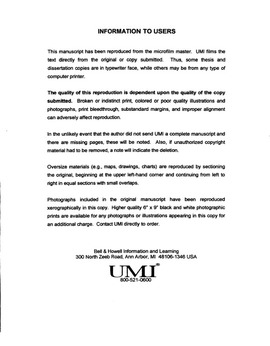| dc.contributor.advisor | Cifelli, Richard L., | en_US |
| dc.contributor.author | Nydam, Randall Lawrence. | en_US |
| dc.date.accessioned | 2013-08-16T12:30:50Z | |
| dc.date.available | 2013-08-16T12:30:50Z | |
| dc.date.issued | 2000 | en_US |
| dc.identifier.uri | https://hdl.handle.net/11244/5922 | |
| dc.description.abstract | The record of Mesozoic lizards has, for many years, consisted of records of primitive lizards from the Late Jurassic and derived lizards from the Late Cretaceous. The intervening time period has almost no record of lizards, with the exception of a brief report of lizards from the Early Cretaceous of Texas. This investigation includes lizards recovered from microvertebrate faunas of the Early Cretaceous (Albian-Cenomanian) Antlers and Cloverly formations of Oklahoma, and, Montana and Wyoming (respectively), the medial Cretaceous (Albian-Cenomanian) Cedar Mountain Formation of Utah, the Late Cretaceous (Turonian) Straight Cliffs Formation of Utah, the Late Cretaceous (Campanian) "El Gallo Formation" of Baja California del Norte, and the Late Cretaceous (Maastrichtian) Hell Creek Formation of Montana. The lizards of the Antlers and Cloverly formations are taxonomically and morphologically similar to the primitive lizard fauna (i.e., paramacellodid dominated) of the Late Jurassic indicating a nearly 30 million year period of relative stasis. The lizards of the Cedar Mountain Formation are taxonomically and morphologically similar to the derived lizard faunas of the Late Cretaceous. This fauna includes the earliest global occurrences of Monstersauria (helodermatid-like platynotans), Polyglyphanodontinae, and possibly Cordylidae and Scincidae as well as the latest global record of paramacellodids. Additional records of polyglyphanodontine lizards with Polyglyphanodon-like teeth from the Turonian of Utah, the Campanian of Mexico, and the Maastrichtian of Montana indicate that there was a lineage of Polyglyphanodon-like polyglyphanodontines endemic to North America. These taxa are distinct in tooth morphology from the Asian polyglyphanodontine lizards, from which they must have diverged at least by the end of the Early Cretaceous. | en_US |
| dc.description.abstract | The relatively rapid shift in the North American lizard fauna during between the Early and medial Cretaceous coincides with the diversification of angiosperms. However, a derived lizard fauna in Asia, similar in composition to the lizard faunas of the medial and Late Cretaceous of North America, is antecedent to the diversification of angiosperms. The sudden appearance of derived lizard taxa in the medial and Late Cretaceous of North America is likely due to the dispersal of taxa from Asia to North America during the Early Cretaceous and Late Cretaceous. | en_US |
| dc.format.extent | xix, 287 leaves : | en_US |
| dc.subject | Paleontology. | en_US |
| dc.subject | Paleontology Mesozoic. | en_US |
| dc.subject | Paleontology Cretaceous. | en_US |
| dc.subject | Lizards, Fossil United States. | en_US |
| dc.title | New records of Early, Medial, and Late Cretaceous lizards and the evolution of the Cretaceous lizard fauna of North America. | en_US |
| dc.type | Thesis | en_US |
| dc.thesis.degree | Ph.D. | en_US |
| dc.thesis.degreeDiscipline | Department of Biology | en_US |
| dc.note | Adviser: Richard L. Cifelli. | en_US |
| dc.note | Source: Dissertation Abstracts International, Volume: 61-02, Section: B, page: 0752. | en_US |
| ou.identifier | (UMI)AAI9962951 | en_US |
| ou.group | College of Arts and Sciences::Department of Biology | |
